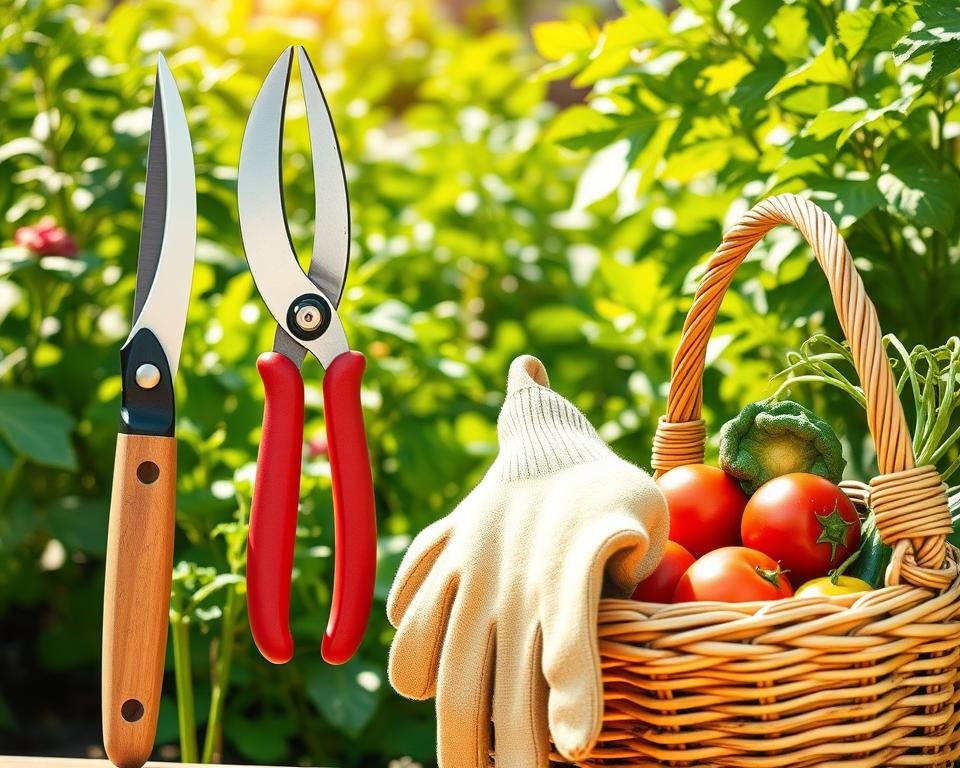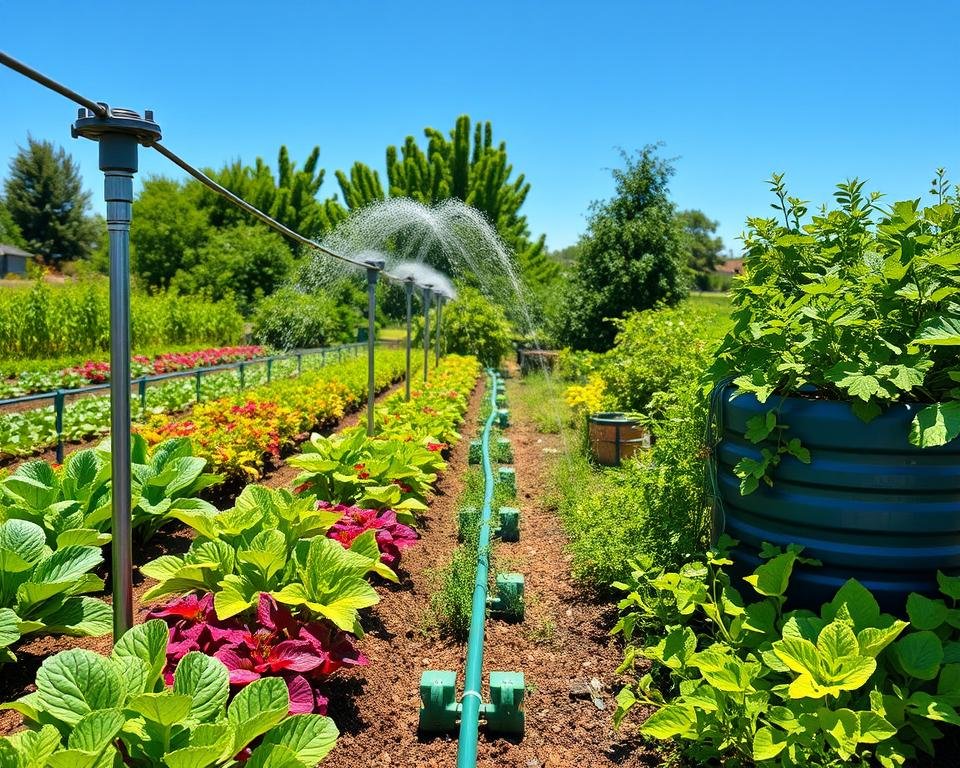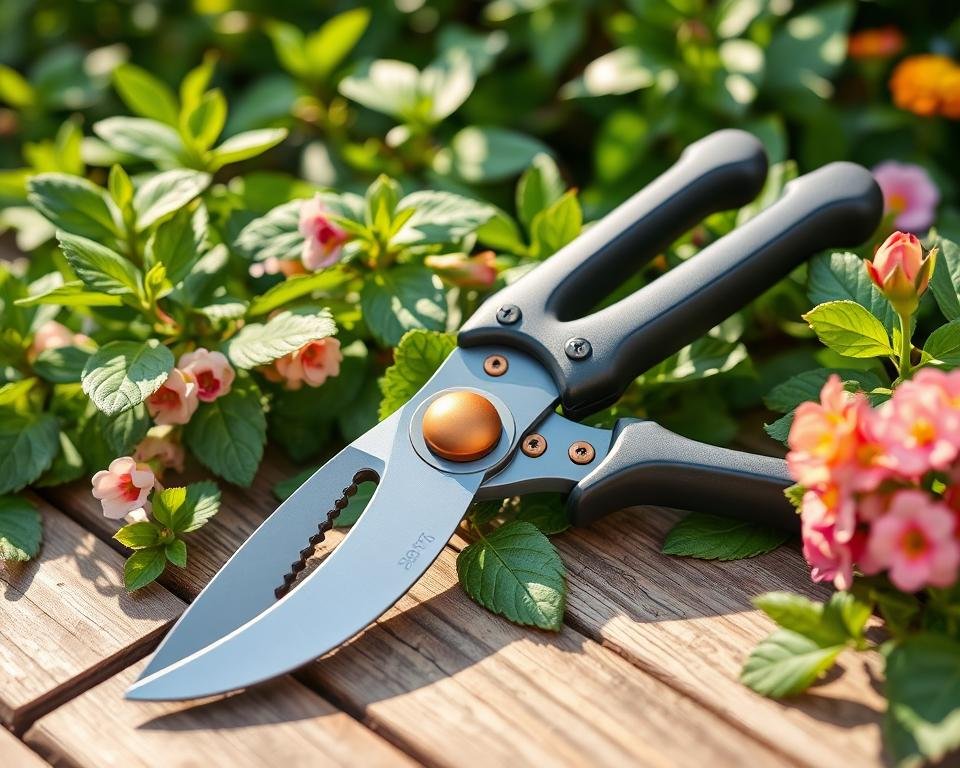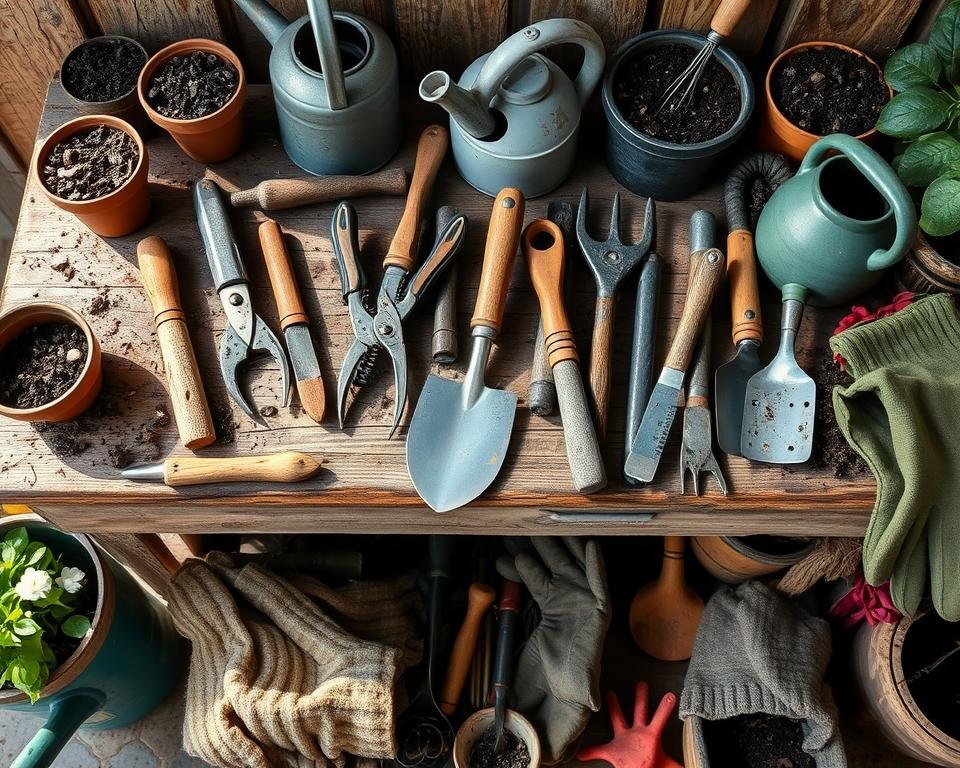Do you have the right tools for a thriving vegetable garden? You’ll need shovels, hoes, pruners, and irrigation systems. These essentials will turn your garden into a lush, productive oasis. Are you ready to make garden maintenance easy?
Keeping a vibrant vegetable garden needs the right tools. Whether you’re experienced or new to gardening, the right tools matter. They help with everything from soil prep to harvesting your fresh produce.
In this guide, we’ll cover the essential tools for every vegetable gardener. We’ll look at shovels, hoes, pruners, and irrigation systems. These must-haves will enhance your gardening experience and ensure a great harvest every season.
Essential Gardening Tools for Vegetable Growers
To keep a vegetable garden thriving, you need the right tools. Shovels and spades, and hoes and rakes are key. They help with soil prep, weed control, and keeping your garden neat.
Shovels and Spades
A good shovel or spade is crucial for any garden. They’re for turning soil, mixing in compost, and digging holes. Look for sturdy, rust-resistant blades and comfortable handles.
Choosing the right size and shape makes a big difference. A round-point shovel or a flat spade can make tasks easier.
Garden Hoes and Rakes
Weeds can take over a garden if not managed. Hoes and rakes are key for keeping weeds under control. Hoes with sharp blades cut through weeds, while rakes clear debris and level the soil.
Having the right tools is vital for gardening success. With shovels, spades, hoes, and rakes, you’re set for garden soil preparation, raised bed gardening, and more.
Tools for Maintaining a Healthy Vegetable Garden
Keeping a vegetable garden healthy is more than just starting with good soil. You need the right tools for tasks like pest control and fertilizing. Let’s look at the essential tools for a lush, productive garden.
Garden Pest Control Tools
It’s important to protect your veggies from pests. You’ll need hand-held sprayers, dust applicators, and organic repellents. These tools help fight pests like aphids and beetles without harsh chemicals.
Fertilizer Application Tools
Feeding your plants the right nutrients is crucial. Tools like broadcast spreaders and fertilizer injectors make it easy. They help you apply fertilizers evenly, ensuring your plants get what they need.
Organic Gardening Essentials
- Compost bin or tumbler for creating nutrient-rich compost
- Garden fork or tiller for aerating soil and incorporating organic matter
- Mulch spreader for applying organic mulch around plants
- pH testing kit to monitor and adjust soil acidity levels
These tools help you keep your garden healthy and chemical-free. They support sustainable practices like composting and mulching.
Having the right tools for garden care ensures your plants thrive. This way, you can grow a organic garden without harsh chemicals.
Pruning and Harvesting Tools
Keeping your vegetable garden healthy and productive needs special tools. Pruning helps plants grow strong, while harvesting tools make picking easy. Let’s look at the key tools for these important tasks.
Pruners and Loppers
Pruners and loppers are key for cutting and trimming plants. Pruners work well for small stems and branches, making clean cuts. Loppers, with their long handles and strong blades, handle thicker growth better.
By cutting away dead or damaged parts, you improve air flow and sunlight. This helps your plants stay healthy and productive.
Harvesting Baskets and Knives
When it’s time to pick your vegetables, the right tools matter. Sturdy baskets or buckets are great for carrying your harvest. They keep your vegetables safe and sound.
Harvesting knives, with their sharp blades, make cutting easy. Using the right tools helps you get more and better vegetables from your garden.
| Tool | Purpose | Key Features |
|---|---|---|
| Pruners | Precise cutting and trimming of smaller stems and branches | Compact size, sharp blades, and lightweight design for easy maneuverability |
| Loppers | Cutting and pruning of thicker growth and larger branches | Longer handles and more powerful blades for increased leverage and cutting capacity |
| Harvesting Baskets | Collecting and transporting freshly picked vegetables | Sturdy construction, ample capacity, and ergonomic handles for comfortable use |
| Harvesting Knives | Cutting and separating ripe produce from the plant | Sharp, serrated blades designed for efficient and precise harvesting |

Watering and Irrigation Systems
Keeping your vegetable garden healthy means watering it well. You can use hoses, watering cans, or drip irrigation systems. Each has its own benefits and things to consider. Let’s look at them to find the best way to water your garden.
Manual Watering
For small gardens, a hose or watering can works well. It lets you control the water and focus on specific areas. But, it takes time and might not cover all areas evenly.
Sprinkler Systems
Sprinkler systems are great for bigger gardens. They spread water evenly and efficiently. You can set them to water at certain times, making sure your plants stay hydrated.
Drip Irrigation
Drip irrigation is perfect for organic gardening. It waters the roots directly, saving water and preventing disease. These systems can run on solar power or from a hose, making watering easy.
| Watering Method | Pros | Cons |
|---|---|---|
| Manual Watering |
|
|
| Sprinkler Systems |
|
|
| Drip Irrigation |
|
|
Knowing the good and bad of each garden irrigation systems helps you choose the right one. Whether you choose manual, automated, or a mix, watering well is crucial for a healthy garden.

Conclusion
In this guide, we’ve covered the key tools for a thriving vegetable garden. We talked about shovels and spades for soil prep. We also mentioned pruners and harvesting knives for specific tasks.
Getting the right tools, like tools for maintaining a healthy vegetable garden, gardening tools, and vegetable garden maintenance gear, is crucial. These tools help you weed, water, and harvest easily. This ensures your veggies grow well and your garden flourishes.
As you keep working on your garden, remember the importance of the right tools. Use these essential gardening tools to make your garden a vibrant, productive, and sustainable place.
FAQ
What are the essential gardening tools for maintaining a healthy vegetable garden?
You’ll need shovels and spades for soil prep. Garden hoes and rakes help with weeding and tidying. Pruners and loppers are for pruning. Harvesting baskets and knives make picking your veggies easy.
How can I ensure my vegetable garden stays healthy and productive?
Besides the basic tools, you’ll need pest control, fertilizing, and watering tools. Use sprayers for organic pest control, handheld spreaders for fertilizer, and irrigation systems for consistent moisture.
What are the benefits of using the right tools for vegetable garden maintenance?
The right tools make a big difference in your garden’s health and yield. They help you prepare soil, control pests, fertilize, prune, and harvest efficiently. This leads to a thriving garden year after year.
How do I choose the best pruning and harvesting tools for my vegetable garden?
Look for sharp, high-quality blades in your pruners, loppers, and knives. Consider the tool’s size, weight, and any special features. These can make pruning and harvesting easier and more efficient.
What are the different types of irrigation systems suitable for a vegetable garden?
You can water your garden with hoses, sprinklers, drip irrigation, or automated systems. Each has its own benefits and considerations. The best choice depends on your garden’s size, water source, and your preferences.

